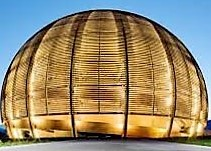Speaker
Description
Facility for Research in Experimental Nuclear Astrophysics (FRENA), an upcoming tandem accelerator facility at Saha Institute of Nuclear Physics, Kolkata, India. This is a low energy (0.2-3 MV) high current facility primarily designed for nuclear astrophysical studies. Most of the astrophysical reactions have very low cross-sections with large error bars[1]. So the background studies in this region is very crucial for accurate measurements. The wall thickness of FRENA is ~1.2m thick in order to reduce the cosmic background but those walls become a source for gamma background from natural isotopes like $^{238}$U, $^{40}$ K and, $^{232}$Th [2]. In this work, a detailed background measurement is performed during beam on and off conditions. Different scintillator detectors (NaI & LaCl$_2$) are used to measure gammas at different positions of the accelerator building. With and without reduced background by Lead brick array (Pb, Z=82) and detail CPS calculation is done to understand the counts coming from a particular element. The machine parts themselves are made up of SS-304 (mainly consisting of Chromium, Nickel, and Carbon), Tantalum and copper. During beam on condition, neutrons are generated in beam dump and these neutrons interact with different isotopes present vicinity, gives gamma photon as background. Some of them have long half-life too[3]. Caen digitizer (DT5730) was used as data acquisition system. The same will be used in the future for the FRENA experiments. An experiment is planned to study the formation of $^{106,108}$Cd at FRENA.
References:
[1] Claus E. Rolfs & William S. Rodney. (2005). Cauldrons in the Cosmos
[2] Glenn F. Knoll. 2001-01. Radiation Detection and Measurement
[3] arXiv:2203.01995v1 [nucl-ex]
